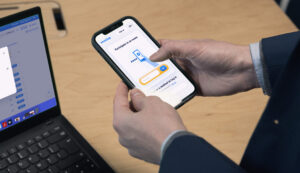
SMEs are the lifeblood of markets worldwide. They comprise 99% of all enterprises and provide 60% of the world’s employment. But one issue that all enterprises face is the volatility of energy costs, and how the fluctuation of energy prices can affect the profit margin of SMEs. Going green is a term that is synonymous with ecologically-conscious decision making and being sustainable. This means that your company needs to maintain energy efficiency. You have to begin by understanding what denotes sustainability, and ways that it can be achieved within your organization.
Exploring the possibilities of green business
There are a host of industries that may fit into the category of SME, and each has its own energy needs—some are much different from the rest.
A manufacturing plant will have much higher energy needs than an office complex would. Similarly, a full-service restaurant may have higher energy needs than a small retail location.
It is also important to note that sustainability also extends beyond the realm of direct energy usage, and ventures into how our purchases and processes directly or indirectly affect the environment. Here we will give six ways that your SME can employ to achieve maximum sustainability.
Hold a Reverse Energy Auction
Around the world, there have been significant legislative changes to the way energy companies do business, with more pressure on businesses to hit CO2 targets. For example, recent policy changes in Poland have spurred energy giant PGE to focus on greener investments such as offshore wind farms.
But another change brought about by these changes is an opening of the energy market to competitors.
Primary utility companies have been forced to share the market with outside companies, small businesses disrupting the industry and giving more options to consumers.
Consequently, families and businesses are often able to choose who supplies the energy at their address with more freedom. This is known as the reverse auction concept.
In a typical auction, the person buying will offer competing bids until the highest bid has been reached.
With a reverse auction the sellers—in this case, the energy companies—compete by bidding to offer the lowest energy rate. To create a reverse auction, either secure the services of an energy broker or purchase a reverse auction software application.
Watch this video to learn more:
Monitor Your Energy Consumption
The average business uses between 15,000 and 25,000 kWh of energy each year. The size of the company is the main factor for determining how much power a company will use.
Regardless of where your company is now on the spectrum, you can implement a plan to reduce your consumption.
To do this, you must find out how many kilowatt hours you are using currently. Gather your energy bills for the previous year and work out on average how much your business is consuming.
It’s worth stating that you should focus primarily on the winter and summer months when energy consumption is the greatest. Once you have calculated your average kWh usage annually, your goal is to reduce this number starting immediately upon calculation.
Implement an energy saving plan that will be used throughout your company. This plan will begin with the obvious implementation of a “power down” protocol that requires that all lights and equipment be powered down when not in use.
Find ways that your specific business can cut back and add these findings to your energy plan.
For example, let’s say own a small restaurant. You might turn on all your ovens at the start of the day. But if you anticipate lower orders based on previous sales, you might instead choose to switch on only one or two.
Every month, monitor the power use as reflected on your energy bill, and determine whether or not you have been able to reduce your facility’s energy use.
Install a Smart Meter
A smart meter is an electronic device that tracks the energy use of a home or business. Smart meters resemble the traditional energy meter upon first glance.
The significant difference is the digital display on the smart meter as opposed to the dials on the conventional meter. The digital display gives real-time energy data in addition to the monthly kWh usage.
The smart meter communicates directly with the energy source, which creates the opportunity for desktop and mobile energy monitoring.
With smart meters, you can monitor your energy utilization on your computer and smart device using energy monitoring applications. Energy monitoring programs are explicitly designed to give accurate energy consumption data, and some applications actually help regulate energy usage as well.
Install a smart meter and purchase an adequate monitoring application for your company, and become proactive with your energy monitoring and regulation.
Install Smart Outlets and Plugs
Smart outlets and plugs are devices that electronics and appliances are plugged into so they can be controlled and monitored remotely using either Wi-Fi or Bluetooth technologies.
These devices are accessible via smartphone that can monitor and control the power being distributed from the smart plug to the appliance or device that’s plugged into it.
Smart plugs and outlets track the utilization and also allow for timed power on and off functions. Connect office equipment and breakroom appliances to smart plugs and outlets to reduce energy consumption.
Purchase Sustainable Supplies and Materials
This is another way to have a positive impact on the environment through purchase.
Buy recycled paper products and support businesses that promote sustainable processes in the manufacture of their goods. You could even take it further by not buying any supplies at all, instead of going entirely paperless.
Get your employee handbook and turn it into a downloadable ebook, and enforce a reusable coffee cup policy. There are dozens of little things that businesses have taken for granted for years that can be changed. Take a hard look at your existing work practices and see what little changes you can make today.
Many companies make it a point to do business with sustainability at the forefront of their practices. Make the extra effort to seek out companies that support eco-friendliness.
Recycle
Recycling is a classic sustainability effort that dates back to the Athens municipal dump program of 500 B.C.
In this modern era, there is more waste created than at any time in history. This makes the push for recycling an important one for the environment.
Promote recycling at your company to help keep non-biodegradable waste from filling up landfills, and keeps from wasting goods that can be reused to save energy and resources.
As the person responsible for keeping your SME running efficiently, you have to be ever-mindful of how your company is not only utilizing energy but also how your company is impacting the overall environment. These six methods will allow your company to become eco-friendly and go green.




